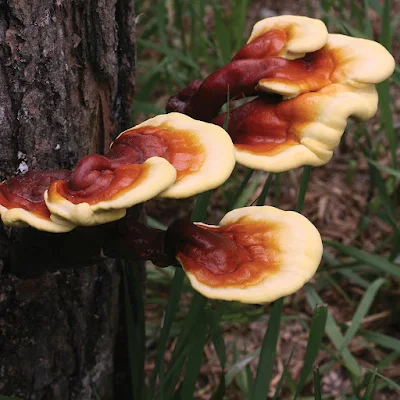Medicinal mushroom farming in Pimpri-Chinchwad | Mushroom cultivation | Biobritte mushroom center.
Medicinal mushroom farming in Pimpri-Chinchwad.
- Here are six ways in which mushrooms are more than just a superfood.
- Most farms produce tons of agricultural waste that are often burned or composted.
- But as nature’s great recyclers, fungi can break down nearly any carbon-based material, from woody trees to industrial pollutants. Multiple commercial mushroom species have been shown to grow on over 200 agricultural residues, including corncobs, bamboo shoots, potato leaves, soybean hulls, and peanut shells.
- Rather than placing all the value on the seed or fruit of a given crop, farmers could start to see that the other 80 to 90 percent of the plant is food for another crop entirely: edible and medicinal mushrooms.
- Though mushrooms can be grown year-round, it’s especially ideal to grow them during the winter months when other local foods are only minimally available in most of the U.S. Not only is this a time when farmers are looking for a bump in revenue, but it’s also perfect for growing mushrooms, as the cooler temperatures and higher humidity levels are ideal growing conditions.
- Their growing cycles take 1 to 3 months, depending on the species, allowing farmers to time their mushroom crops around their harvest season.
- Mushrooms can be also be grown indoors with minimum infrastructural investment during the summer months between planting and harvesting vegetable crops.
- Cultivated varieties such as Shiitake and oyster mushrooms provide many nutrients that other vegetables are low in or lack entirely.
- Most mushrooms species are high in various B vitamins, while others contain an abundance of vitamin C. All mushrooms have ergosterol—a compound called a vitamin D precursor—in their cell walls.
- When fresh or dried mushrooms are placed in direct sunlight, this compound naturally converts to vitamin D, often to significant levels within just a few hours.
- Mushrooms are also an excellent source of micronutrients like calcium, magnesium, sodium, potassium, phosphorus, and the microelements copper, iron, selenium, manganese, and zinc.
- Unlike many health supplements, the minerals in mushrooms are often found in an ionic form that is easy for the body to assimilate. Mushrooms are also one of the few organic sources of germanium and selenium, elements that have been shown to increase resistance to diseases and combat harmful free radicals.
- When fresh, mushrooms contain around 3.5 to 4 percent protein and around 19 to 35 percent when dried. Many mushrooms contain all of the essential amino acids, with some species being among the highest natural sources of lysine.
You can buy all types of mushroom products from the Biobritte cart.
Biobritte mushroom company is the top mushroom company in India.
Mushroom consultants in India.
For more details - https://biobritteagrosolutionspvtltd.in/shop
Contact - 7709709816\9923806933.
Tags - Mushroom company, mushroom business, mushroom training, mushroom cultivation training, mushroom buyback, mushroom contract farming, mushroom store, mushroom cart, Biobritte company, Biobritte cart, Biobritte fungi school, Biobritte mushroom company, oyster mushroom cultivation, ganoderma mushroom cultivation, mushroom spawns, mushroom farming, mushroom webinar, mushroom franchise, Mushroom contract farming , mushroom consultants, mushroom products, mushroom cookies, mushroom papads, mushroom pickle, mushroom powder, mushroom extracts, mushroom beverages,mushroom drinks, mushroom tea, mushroom tincture,mushrooms in beauty products, mushrooms in cosmetics, mushrooms in foods, mushrooms in medicines, mushroom supplements, mushroom protein powder,mushroom for hair products, mushroom webinar, mushroom cultivation business, mushroom training online, shittake mushroom, cordyceps mushrooms , keedajadi mushrooms, cordyceps militaris, mushroom food company, Biobritte mushrooms online delivery service, fresh & dry mushroom supplier, mushroom seeds, mushroom seed supplier in India, mushroom products and services, top mushroom company,Mushroom farming, mushroom cultivation training, ganoderma mushroom supplier, mushroom seeds, mushroom spawn company, Biobritte store, Biobritte cart, Biobritte fungi school, Mushroom training, Biobritte mushroom training online, mushroom franchise, mushroom contract farming, mushroom buyback, mushroom repurchase, mushroom spawn supply, mushroom cultivation, organic mushrooms, oyster mushrooms, reishi mushrooms, wood ear mushrooms, cordyceps mushrooms,





Comments
Post a Comment